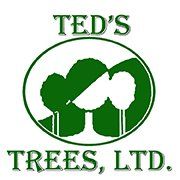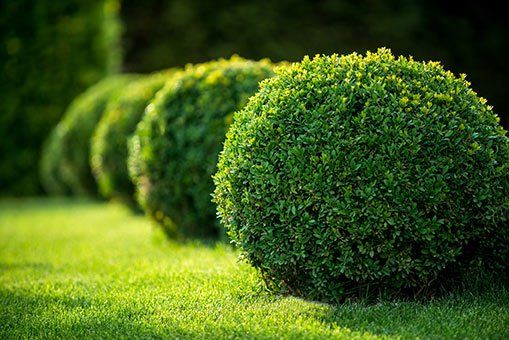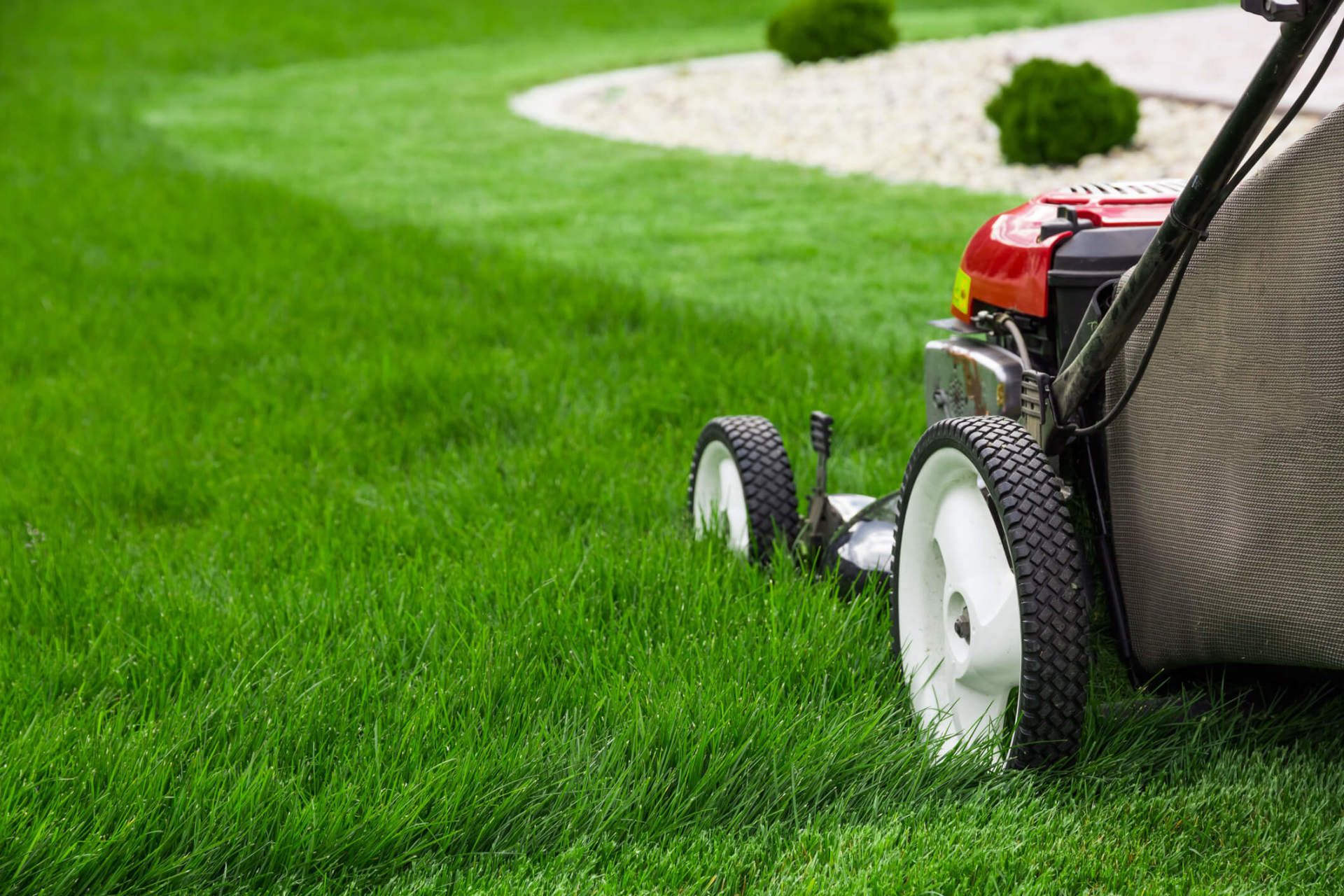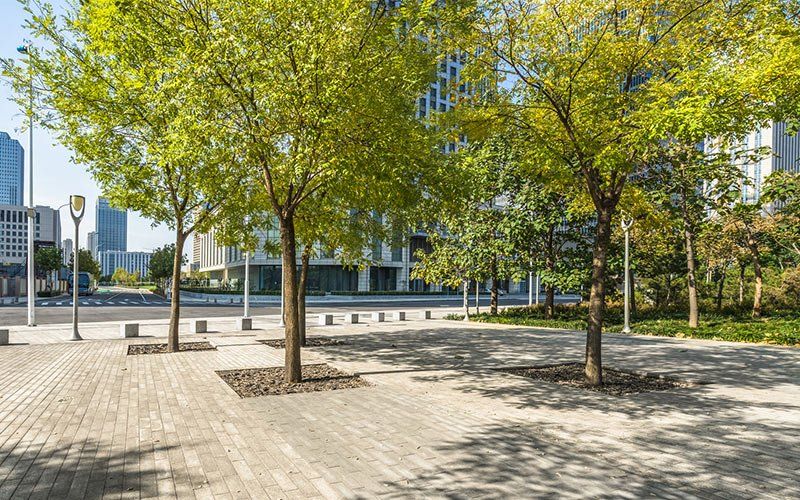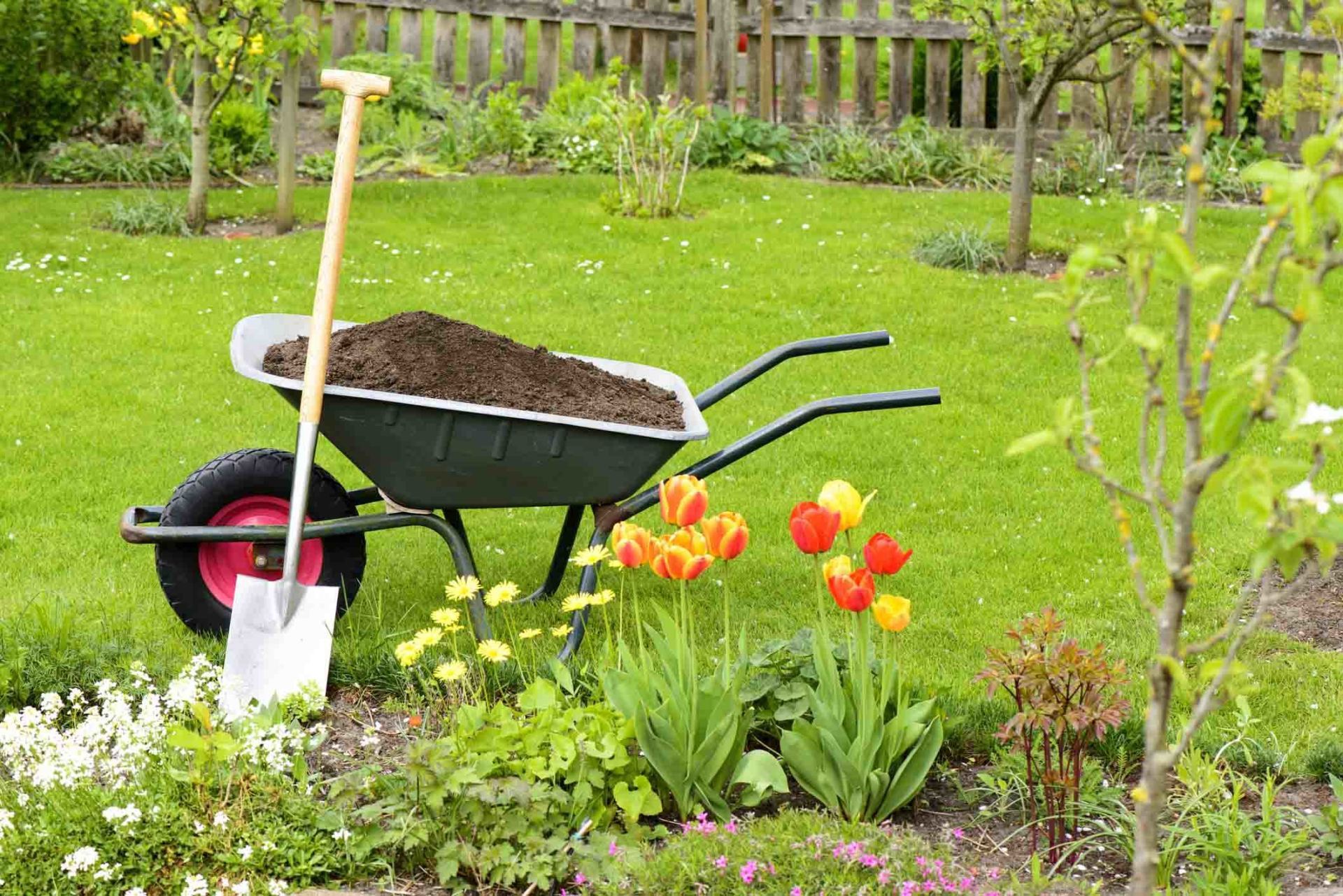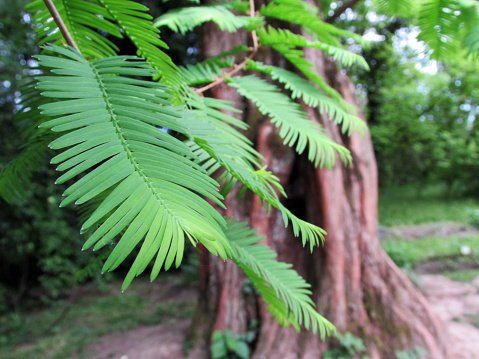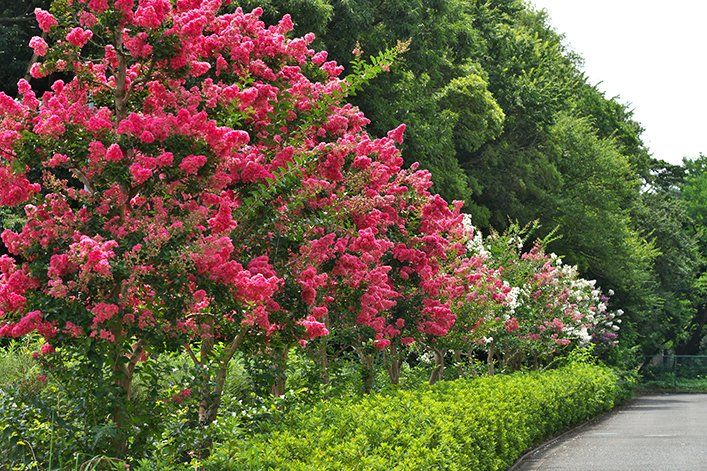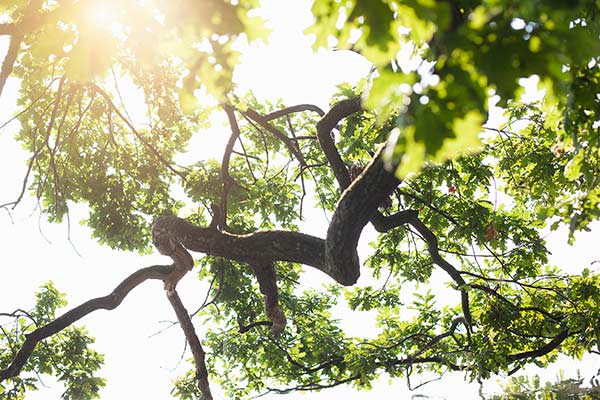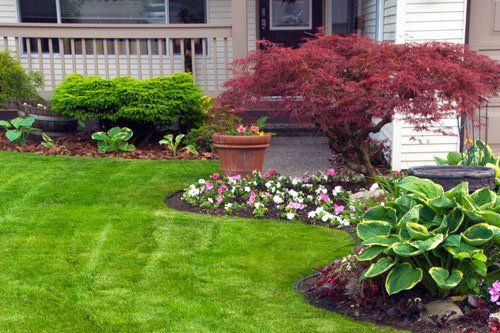How to Find Stunning Shrubs to Complement Your Backyard Design
Admin • September 24, 2018
When many owners plan for their backyard landscape, they tend to give a lot of thought to the flowers and the trees. But even though these big, showy additions to the landscape are important, they shouldn't outweigh the decision about what shrubs to include. In fact, shrubs are a sort of unsung hero of many landscape designs.
How can you make better use of shrubs in your landscape plan? Here are a few steps to success.
Decide the Role of the Shrub
Shrubs tend to be in the background of many landscapes, but they can serve many purposes. They can add color without a lot of work. They can quickly fill empty voids in the landscape. They can provide a complementary bridge between landscape elements. And they can serve as borders inside and around your yard.
Before shopping for shrubs, consider your goals and priorities. Do you want shrubs in a particular area in order to fill in space? To create an attractive backdrop? To hide unsightly items? Are you looking for a particular feeling, such as lush color or elegance and drama? Know what you need so you can zero in on the right plants more quickly.
Know the Size You Need
Along with the role intended for a bush, keep in mind how you want it to look. If the space you're filling is large, you may want a big shrub - perhaps even one like the mountain laurel, which often appears more like a tree than a shrub. If the area is smaller and surrounds delicate flowers, a daintier bush (such as the black chokeberry) may be appropriate.
Ask your landscape specialist about the general size ranges of each shrub as well as how quickly it grows. If you want a more formal look, you'll need to prune the bush regularly, so you should look for something that doesn't grow too fast. On the other hand, if you want to fill your landscape quickly and inexpensively, a rapidly growing bush can do the job nicely.
Think About Unusual Traits
Shrubs have different characteristics that can make them perfect for specific situations. If planting shrubs around a summer flower garden, for instance, you could opt for bushes with autumn color (such as bluebeard) or even winter berries to provide a bright pop in the winter doldrums.
Shrubs can also provide interesting bark colors, contrasting texture in a garden, or a solid green background to highlight small flowers in beds.
Like butterflies? Add a butterfly bush. Want to attract backyard bumblebees? Try rhododendron or rosemary. Prefer more birds outside your windows? Plant holly, hibiscus, or lilac bushes. On the other hand, if you want to deter nearby wildlife, you may have success bordering with shrubs like sage, rosemary, or thorny evergreens.
Make Sure It's Hardy
Before you purchase your new shrub and plant it, make sure that it will do well in your climate and location. Native bushes are the best for this, as they tend to naturally thrive in the local environment.
If you do choose an imported plant, though, find out what type of soil, water schedule, and sunlight it prefers. Can you meet these needs in the specific location you plan for the bush? If the planting spot won't receive regular cover from an existing sprinkler system, have your landscape service install a drip irrigation system to keep the shrub (or shrubs) happy without extra maintenance.
For the best results no matter how large or small your shrub needs are, work with an experienced local landscape service. At Ted's Trees, LTD.
, we will help you find the best mixture of small plants, midsize shrubs, and larger trees to turn your backyard into a Texas paradise. Stop by today!
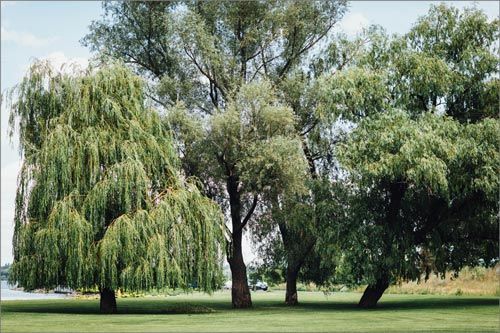
Weeping trees are a popular addition for your yard. You probably know all about the classic weeping willow, but a weeping tree is simply one that features drooping leaves or branches. Elm, spruce, cedar, birch, and cherry can come in weeping varieties, and the weeping willow also comes in several different versions. Once you have a beautiful weeping tree, complement the graceful backdrop it presents with appropriate hardscaping and landscaping. Add Color With Flowers Many weeping trees, such as willows and pines, present green backdrops. Therefore, you'll want to add color to your landscape with flowers. Unless you choose shade-loving flowers, plant them slightly away from the tree but with some connection. For example, you could plant a flower garden slightly off-center in front of the tree. Introduce New Textures Around the Tree The defining characteristic of weeping trees is their branches, which create a graceful arc that might extend all the way to the ground. The visual texture the tree presents will depend on its cultivar. For instance, the classic willow features thin stems with narrow lines. A weeping elm will feature flat leaves in a profusion down the arcs. Start with the texture your tree presents, and add a new one with the landscaping around it. Hosta is an ideal plant for this purpose because it features broad, variegated leaves. Bleeding heart is another attractive plant with unique flowers. Just make sure the plants you choose can tolerate the shade of your tree's canopy. Create Groundcover Under the Canopy In that vein, you may want to landscape under the canopy. You don't have to be so deliberate in choosing plants with different textures for under the canopy because they won't be as visible. The key is to choose plants that thrive in the shade. Jerusalem sage and white trillium grow natively on the forest floor, so they're ideal for groundcover under a weeping tree. Install Lawn Accent Pieces Near the Tree One way to draw attention to your tree is by installing accent pieces in its vicinity. Classics such as a birdbath, statue, or water fountain work well. Play around with placement of the accent item to create a unique tableau. For example, you might tuck a stone statue into the branches hanging down for an interplay of textures. You could emphasize the graceful arcs of the branches with a water fountain in the background. A birdbath would look attractive nestled among flowers in front of the tree. Design a Rock Garden If you're going for more of a forest effect, consider designing a rock garden to complement your tree. Choose an odd number of big rocks to install near the tree. Plant around the rocks with plants that grow in a profusion. The goal is to let the weeping tree provide a backdrop for a garden that appears to have just naturally sprouted around the rocks. Devise a Pathway Around the Tree Because of the shield their branches create, weeping trees often create a sense of mystery. For that reason, a meandering pathway would be a charming way to draw attention to your tree. Your pathway should feature curves to create that meandering ambience. If the branches are high enough off the ground, you might direct the path underneath before curving around the back. For paving, your pathway should be as naturalistic as possible. Consider simply having the ground compacted. However, if you do want some paving, look into natural stones spaced a comfortable stride apart. You can enhance their naturalistic appearance by planting hardy groundcover around the stones. Try an In-Ground Water Feature You often see weeping trees near in-ground water features, such as a pond or stream. Such an installation can create a beautiful woodland effect. You'll want the water feature near the tree so the branches droop over the surface. If you're having a pond installed, consider adding a submerged fountain to spray arcs of water nearby. Install a beautiful weeping tree, and landscape around it to draw attention to its unique profile. Consult with Ted's Trees, Ltd . to install your hardscaping and landscaping, including the tree itself.
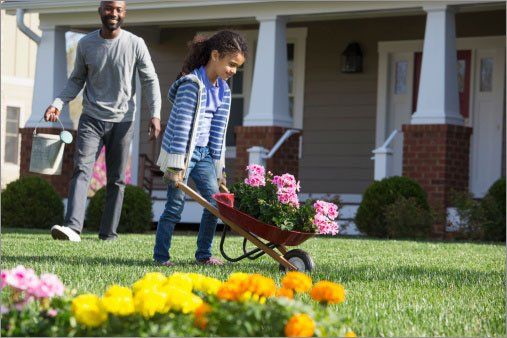
A healthy green lawn, colorful flowers, and lush shrubs and trees are all key components in an attractive landscape design. If you have moved into a newly constructed home or just want to update your existing home, focusing on your landscaping is smart. Good landscape design not only makes your home more appealing but also adds value. In some instances, landscaping can offer you an estimated 215 percent return on your investment. Unfortunately, choosing what elements to include in your landscaping can be a bit overwhelming. With this guide and your contractor's assistance, you will learn about a few must-have plants and trees to include in your Texas 1. Shade-Producing, Drought-Tolerant Trees Texas definitely gets hot, but the heat is not the only thing you need to worry about. Drought is also a problem during some parts of the year, so you should consider installing shade-producing trees that do not require a great deal of water. The Cedar Elm is an excellent option for your Texas landscape. This tree is native to the state of Texas, so it can not only grow but also thrive in high heat and severe drought. The Cedar Elm is the perfect tree for adding texture, beauty, and enormous shade to your landscape. You have many oaks suited to your landscape design, as well. Oak trees are durable and easy to maintain. They also produce a good amount of shade throughout the year. For a lush green foliage in the spring/summer that turns to a deep red in the fall, opt for a red oak tree. If you prefer green foliage all through the year, the Live oak, an evergreen, will be a smart addition to your yard. 2. Heat-Loving Shrubs Trees are great investments, but shrubs are also important for your landscape design. Shrubs can enhance your curb appeal by accenting the front of your home while creating borders and pops of color and texture in flowerbeds. For your Texas landscape, consider one or more of these heat-loving shrubs: Boxwood Nellie Stevens Green Juniper Cleyera Yucca The above shrubs add greenery and definition to your landscaping without a lot of maintenance. You can also add heat- and drought-tolerant shrubs with colorful floral blooms to your landscape design. Gardenia shrubs have rich green leaves with elegant white or cream flowers that bloom in the spring or summer season. You can plant them in full sun, thriving in the intense heat without much water. For even more color, consider planting a few rose bushes, dwarf crepe myrtles, and hydrangea shrubs. The Texas sage plant is also a must-have due to its lavender-colored, bell-shaped flowers. 3. Durable Flowers Trees and shrubs are beautiful additions to your yard, but adding some flowers is important for softening up the greenery in your landscape design. Unfortunately, not all flowers are suited to the sun and heat of Texas, so knowing which ones are durable enough to grow and survive is key. For fun and whimsy that will stand the test of time, make sure to include Gerbera daisies in your flowerbeds. These flowers need full sun and with proper care, they will thrive. In addition, they are perennials , meaning they will come back each year once planted. Columbine flowers are also good options. They love the heat, but they will also grow in partial shade, so they work well in flowerbeds with trees and taller shrubs. Red and yellow varieties will add a valuable splash of color to anyone's yard. When you want to design or enhance your Texas landscape, consider these must-have trees, shrubs, and flowers. For more information, contact Ted's Trees, Ltd.
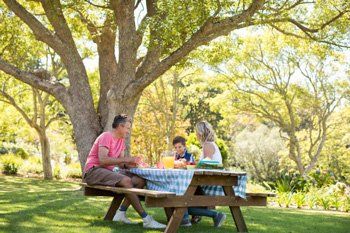
Enjoying a small picnic in your backyard is a great way to get some fresh air while eating in a different location besides your kitchen. Having a backyard picnic in the direct sunlight brings a lot of problems. The heat may be too intense. You may have to constantly reapply sunscreen and your food may spoil faster due to the direct heat. Having a backyard picnic in the shade keeps you out of the direct sunlight and provides a more comfortable atmosphere while in the outdoors. If your backyard lacks shade, there are a number of trees you may choose to plant in the area. Browse through a variety of trees optimal for shade. Choosing just one of these varieties will give your backyard some extra shade for many years to come. Texas Ash Tree Grown to handle the high heat of the Texas sun, the Texas Ash tree is an ideal backyard installation. A single tree or a pair of the trees placed together provides a backyard with plenty of shade and an optimal picnic area. Once the tree blooms in the spring, the leaves become quite large, sometimes growing as long as eight inches. The shade protection is ideal from these leaves, and large stems contain dense collections of the leaves. The Texas Ash tree is very similar to the Carolina Ash tree, and both varieties may be ideal for your backyard installation. Red Oak Tree If you're looking for a tree which grows fast and can fill up your backyard, consider the Red Oak tree. The tree is named the Red Oak for two different times when the colors change. In the spring, the leaves emerge with a light red color. In the fall, the leaves are a beautiful dark red, which really enhances your landscape until the leaves fall off. Red Oak trees are known for their quick growth and willingness to survive. The trees are known to live for hundreds of years and do not need much outside care. The tree can become the centerpiece of the backyard and provide a picturesque setting as you enjoy meals with the family. Add a picnic table right underneath the tree for a great location to visit on a daily basis. A similar option to the Red Oak tree is the Live Oak. The Live Oak also grows quickly, but features leaves that stay on the tree all throughout the year. Cedar Elm No matter what type of soil you have in your backyard, the Cedar Elm is an ideal tree for planting. The tree has been known to survive all types of conditions, including extremely dry weather and long droughts. Because of this, your yard will have a thriving tree without little effort or care needed. These treetops are known to grow outwards and wide, providing you with plenty of shade just from a single tree. The tree may grow up to two feet in a single year, quickly adding a lot of extra shade as the trunk expands and grows on your property. Japanese Red Maple Tree If your backyard is smaller, the Japanese Red Maple tree provides you with a smaller tree size while still adding extra shade. The red maple is known for rich and vibrant colors during multiple seasons of the year. The summer features mostly green leaves, but the blend of colors in the spring and fall can range anywhere from a deep purple to a dark red. These trees do not grow as tall as others, but if you let them grow without trimming, they can thrive and provide a nice area of shade. The tree is ideal for placing near a patio area so the patio has some extra shade and isn't impacted by direct sunlight. Contact us at Ted's Trees, Ltd . to find out more information on trees and having them planted in your yard!
